Food Safety
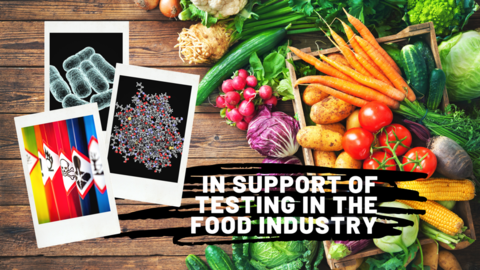
The Food Safety Program at the National Institute of Standards and Technology (NIST) provides advanced analytical chemistry and quantitative biology to ensure that food is free of contaminants and allergens and is authentic, promoting U.S. manufacturers’ participation in domestic and foreign markets, and safeguarding the health of consumers. Food contaminants can sicken consumers, cause outbreaks of disease, and result in costly investigations and recalls with subsequent loss of trust in manufacturers and suppliers. Consumer confidence and safety depend on sophisticated analysis and underlying metrology to detect both intentional and unintentional adulteration and to confirm the identity of food products. As part of the Department of Commerce, NIST’s mission includes promoting competitiveness of and confidence in the $8 trillion U.S. food industry* and other sectors, enhancing economic security, and improving Americans’ quality of life.
Well-characterized food-matrix reference materials are critical to ensure accurate determinations of contaminants in foods. In the same way that macronutrient profiles can impact the analytical determination of vitamins, minerals, and fatty acids, measurement of contaminants can be equally affected by relative levels of fat, protein, and carbohydrate in the food. Food-matrix reference materials are developed from animal, plant, and mixed-matrix sources to represent common food types with various macronutrient profiles. These reference materials are used by laboratories involved with the characterization of food composition (e.g., food manufacturers and processors, regulators, third-party testing laboratories) to develop and validate new analytical methods, to improve the quality of their analytical measurements, and to support compliance with a number of federal regulations enforced by FDA, USDA, and other regulatory bodies.
*2022 figures for US food industry sales (https://www.statista.com/topics/1660/food-retail/, accessed 21 Jun 2023)
Project Areas
Chemical Contaminants
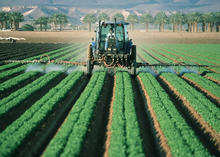
A wide variety of potentially harmful compounds may be present in food, including toxic elements, natural toxins, pesticide and veterinary drug residues, environmental and processing contaminants, unapproved additives and adulterants, and migrants from packaging materials. This diversity in target analyte, combined with a similar diversity in matrix across the food industry, equates to a complicated measurement challenge in monitoring chemical contamination in our food. The NIST effort around determination of chemical contaminants in foods is focused on development of relevant reference materials, interlaboratory comparisons, and other measurement services to assist laboratories in assuring quality. Thirty reference materials for chemical contaminants in foods are currently available or are in development. For additional technical information, contact Melissa Phillips (melissa.phillips [at] nist.gov (melissa[dot]phillips[at]nist[dot]gov)).
Protein Food Allergens
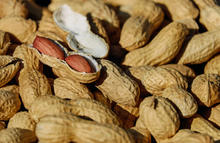
Food allergen management is an increasingly important economic and public health concern, resulting in half of US food recalls and requiring accurate and reliable allergen measurements. Traditional methods for food allergen detection are based on immunoassay techniques and are linked to a specific commodity (e.g., total milk protein, total egg protein). Current food allergen reference materials include a value for total commodity as determined by non-specific approaches, such as total nitrogen measurement, and contain no direct link between the measured food allergen protein(s) and the reported total commodity value. The emergence of mass spectrometry-based platforms has revealed the need for reference materials that support protein-specific measurements. To support the harmonization of food allergen measurements, the food allergen research effort at NIST is focused on providing reference materials and methods to improve the connection between the measured protein food allergen and the reported total commodity value. For additional technical information, contact the NIST Food Allergens Team at (NISTFoodAllergens [at] nist.gov (NISTFoodAllergens[at]nist[dot]gov)).
Microbial Contaminants
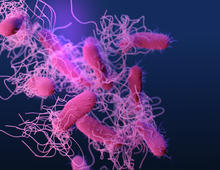
Microbial contamination is the leading cause of foodborne illness worldwide. To meet microbial testing needs of the fast-paced food industry, methods must be rapid and thoroughly validated. NIST is interested in working with the food industry to build links between classical compendial approaches and novel test methods for microbe detection, to decrease the time and cost needed to implement higher-throughput technology. Additionally, when microbial contamination is detected, accurate source tracing methods must be implemented to eliminate current consumer risk and reduce likelihood of future risk. To this end, NIST has developed a suite of microbial genomic DNA reference materials for quality control and proficiency testing in whole genome sequencing, the official method for identifying the sources of contaminated foods during foodborne outbreaks. For additional technical information, contact Justin Zook (justin.zook [at] nist.gov (justin[dot]zook[at]nist[dot]gov)).
Food Authenticity

Food manufacturers and regulators are challenged to ensure through testing that an ingredient or food is being accurately represented. The scope of the authenticity and adulteration problem ranges from an accidental substitution of one product for another (e.g., two crops physically resemble one another and are mislabeled during or after harvest) to fraud through intentional substitution of one lower-cost commodity for another to downright threats to public health involving addition of components to boost certain attributes of the product (e.g., melamine in milk to increase the measured results of a non-specific protein determination). Addressing these issues requires a suite of testing methods used in concert to understand product characteristics and monitor and respond to changes. The NIST food authenticity effort is exploring solutions that involve advanced methodology, data tools, and reference material suites to assist food manufacturers in ensuring product authenticity. For additional technical information, contact Kate Rimmer (kate.rimmer [at] nist.gov (kate[dot]rimmer[at]nist[dot]gov)).
Measurement Services
Reference Materials for Toxic Elements
Reference Materials for Other Chemical Contaminants
Reference Materials for Food Allergens
SRM 1549a Whole Milk Powder
SRM 1567b Wheat Flour*
SRM 1568c Rice Flour*
SRM 1845a Whole Egg Powder
SRM 1947 Lake Michigan Fish Tissue
SRM 1947a Great Lakes Fish Tissue (in development)
SRM 1974d Mussel Tissue (in development)
*Material was irradiated to prevent bacterial growth as described in the corresponding Certificate of Analysis, which may affect performance for some allergen assays.
QUALITY ASSURANCE PROGRAMS (QAPs)
NIST Quality Assurance Programs (QAPs), such as the Food Nutrition and Safety Laboratory QAP (FNSQAP) and the Dietary Supplements Laboratory QAP (DSQAP), provide opportunities for participants to identify and understand community-wide measurement challenges, improve the accuracy of their measurements, and demonstrate an effort to comply with various regulations. These programs offer the opportunity for laboratories to assess their in-house measurements, and participation in a quality assurance program in conjunction with the use of RMs has been shown to improve the comparability and precision of data over time. For additional information, contact the QAP Teams at QAPHUB [at] nist.gov (QAPHUB[at]nist[dot]gov).
Key Collaborators
NIST’s mission is to promote U.S. innovation and industrial competitiveness by advancing measurement science, standards, and technology in ways that enhance economic security and improve our quality of life. Stakeholder engagement is critical for development of impactful measurement services, and some long-standing partnerships are described below. To share your measurement services needs or suggest new or upgraded solutions, please contact Melissa Phillips (melissa.phillips [at] nist.gov (melissa[dot]phillips[at]nist[dot]gov)).
NIST Food Safety Workshop
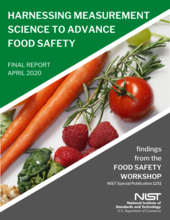
The NIST Food Safety Workshop, held October 28-31, 2019, in Gaithersburg, Maryland, convened more than 100 members of the food safety community from industry, academia, and government agencies including other National Metrology Institutes to discuss the state of the art and critical needs. The outcomes of this workshop are represented in two NIST Special Publications. The main report (NIST SP 1251) covers the content from the workshop, including invited presentations, audience questions, and a summary of action items. The complementary report (NIST SP 1252) provides an overview of content from the debrief session attended by representatives from reference material producers and national metrology institutes following the main workshop.
AOAC INTERNATIONAL
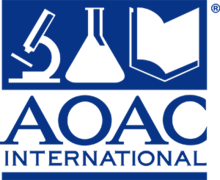
AOAC INTERNATIONAL is a 501©(3), independent, third party, not-for-profit association and voluntary consensus standards developing organization that brings together government, industry, and academia to establish standard methods of analysis that ensure the safety and integrity of foods and other products that impact public health around the world. NIST staff are actively involved in AOAC standards development activities and engaged with AOAC stakeholders to inform development of measurement services to meet food safety needs.
Consumer Brands Association (formerly Grocery Manufacturers Association)
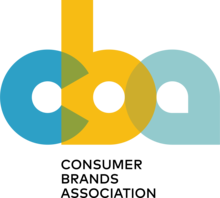
The Consumer Brands Association champions the industry providing the consumer packaged goods industry, including product categories such as household and personal care to food and beverage products. The Consumer Brands Association has a rich history of shaping the food industry and members include some of the largest and most well-known brands in the US. Beginning in the early 2000s, NIST and the Consumer Brands Association (formerly the National Food Products Association and Grocery Manufacturers Association) began a strategic partnership to improve measurements of member laboratories and contribute industry data to reference material value assignments. Many NIST Certificates of Analysis contain reference to this partnership.
National Institutes of Health Office of Dietary Supplements (NIH ODS)
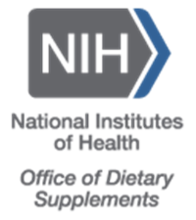
The NIH ODS was created in 1995 to promote scientific research in the area of dietary supplements, and the Analytical Methods and Reference Materials (AMRM) program was established in 2002 to support and accelerate the development, validation, and dissemination of analytical methods and reference materials for dietary supplements and their ingredients. NIST has partnered with the AMRM program since its inception, primarily on natural products research and reference materials. Additionally, determination of contaminants in foods and supplements as well as botanical authenticity has been supported and enhanced through the longstanding collaboration with NIH ODS.
US Food and Drug Administration (FDA)
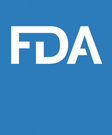
At the US FDA, the Center for Food Safety and Applied Nutrition (CFSAN) is a national leader in protecting and promoting public health by ensuring proper labeling of foods for sale in the US. In initial meetings with the FDA in the 1990s, needs for reference materials to establish accuracy in food labeling helped shape the beginnings of the NIST food nutrition reference material program. More recently, FDA experts provided NIST with direct feedback on needs for advancing food safety testing and regulation enforcement. For the last 30 years, NIST and FDA have maintained open communications that facilitates development and proper use of measurement services.
US Department of Agriculture (USDA)
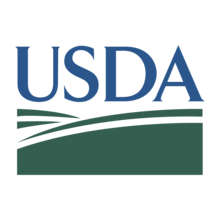
The USDA provides leadership on food, agriculture, natural resources, rural development, nutrition, and related issues based on public policy, the best available science, and effective management. Various laboratories at USDA have directly collaborated with NIST on evaluation of botanical authenticity, and continue to be involved in discussions about emerging needs for new measurement services.

